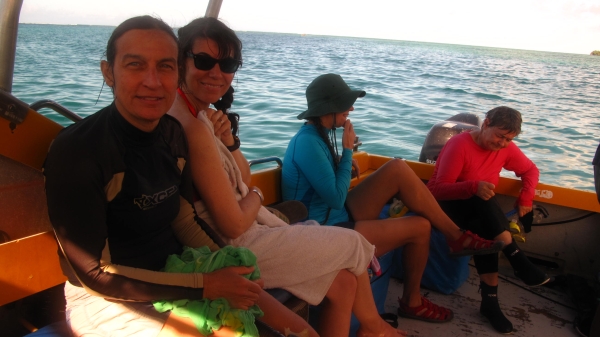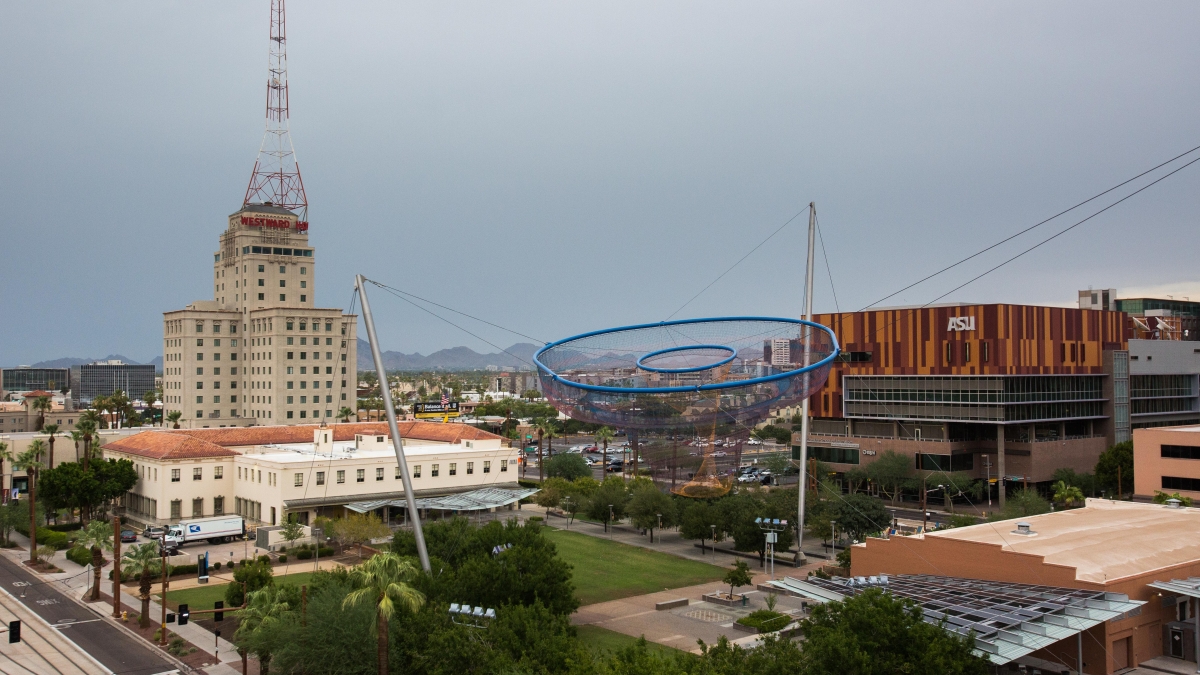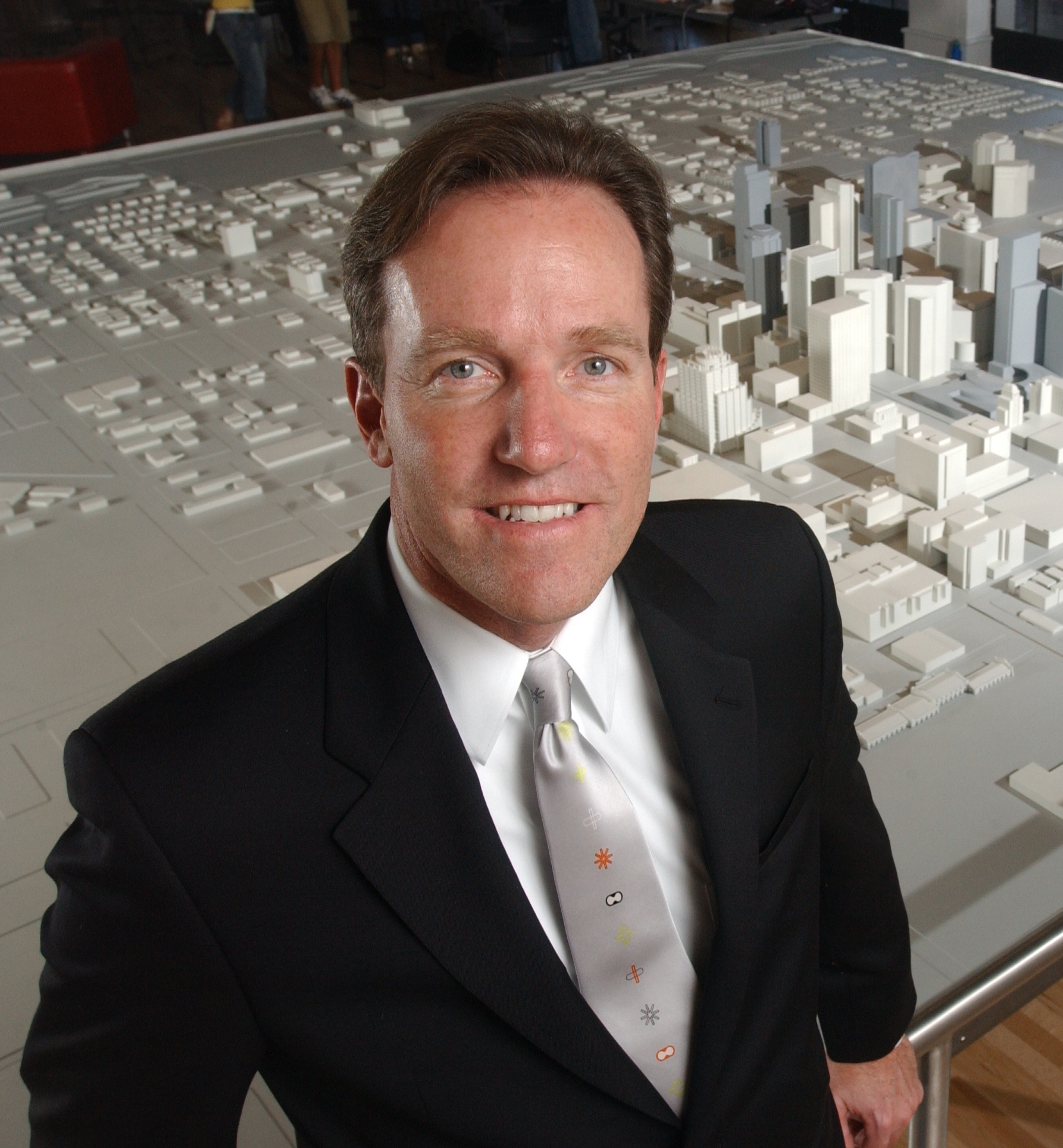Cities across the nation are experiencing a revival thanks to architectural practices that infuse underutilized core spaces with innovative, mixed-use projects to attract and retain educated young workers and support creative collaboration among them.
The Brookings Institute is calling it “catalytic development,” and cites Arizona State University’s Downtown Phoenix campus as one of six case studiesOther case study cities include Detroit; Chattanooga, Tennessee; Cincinnati; Seattle; and Cambridge, Massachusetts. in a new 82-page report.
Wellington "Duke" Reiter, executive director of the University City Exchange at ASU and senior adviser to President Michael M. Crow, lent his creative vision to ASU and the city of Phoenix in the design of the Downtown Phoenix campus more than a decade ago. He participated in a Monday forum in Washington, D.C., hosted by Brookings.
ASU Now caught up with Reiter before he departed for the nation’s capital to discuss catalytic development and how ASU’s Downtown Phoenix campus transformed the city.
Wellington "Duke" Reiter
Question: Let’s start with a clear definition of what catalytic development is and how it’s re-energizing cities around the country.
Answer: The Brookings Institute has identified trends that are happening in cities and have tried to capture the ingredients. I think this includes several things: It’s a place-based strategy where an area of a city is ready for reinvention, it’s got to be about employment, and the Brookings report [must have] confirmed that there are investors and institutions willing to invest in such projects. Walkable urbanism is an attractor of the kind of people who want to live and work in cities, and that ultimately matters to employers, of course. Catalytic development takes into account the amenities that go with thriving cities and the ambitious people who want to be there.
Q: This development obviously takes vision and investment by cities, businesses and corporations. How do they know it will work?
A: I think they can’t be absolutely 100 percent sure that it will work. Take Phoenix, for example. Did we know that ASU’s Downtown Phoenix campus would look the way it does today and that its enrollment would reach nearly 10,000 students in the first decade? I don’t think we ever anticipated it would be as successful as it has become, but we did our homework and looked at success stories from other places which had thriving urban campuses and adjusted our expectations accordingly.
We also selected and moved those schools and colleges which were going to take advantage of an urban circumstance — social work, journalism, law, nursing. They were now close to the public- and private-sector institutions they could leverage and where students might find opportunities. We invested heavily in the research behind those decisions and what would make for a great student experience in this untested environment. I believe we were pretty confident, but in part you have to go on faith and best practices.
Q: Young workers and the “creative class” appear to be pushing this movement. What is it that they are seeking?
A: I would flip that around. I don’t think they’re actually pushing this movement. Employers who want them to come to work for their companies are the ones pushing this. If you’re running a tech company of some kind that will require skill sets likely found in recent graduates and young to mid-level career workers, you know your potential employees are also looking for great urban experiences and the lifestyle found in cities.
Yes, the employees are the end beneficiaries, but it’s the employers and, in our case, a university who are looking to attract those kinds of people and are the ones driving this. In the case of Phoenix and other up-and-coming cities, they are looking to change their fortunes with more businesses and tax revenue, as well.
Q: But aren’t young workers and the creative class contributing to this phenomenon? It seems as if in the past, they got a job somewhere and they moved. Millennials in particular, seem to be cherry-picking employers and calling the shots.
A: That’s true. People no longer simply go where the employment opportunities are; they go where they would like to live. Employers need to recognize this. If a business has a suburban campus that’s hard to get to other than by driving and there’s nothing else around it, they might have trouble attracting the people they want. Future workers might not want to have a car. And in addition to being able to get to work easily, they might just want to walk to the gym, restaurants or the symphony or the clubs. Music is a big part of the creative class, as is diversity. They want to be around different people and experiences. So they are motivated to move to where they want to be and hopefully employers get the message. This is the creative class thesis.
Q: What are some positive byproducts of catalytic development?
A: The rehabilitation of older buildings. As author Jane Jacobs wrote, “New ideas need old buildings.” That’s been true of the New York art scene forever. After serving as warehouses and manufacturing buildings, many were transformed into artists’ lofts and studios, then they were galleries, and now home to tech companies. … Older buildings being rehabbed suggest a rejuvenation, something being reborn. That’s very attractive to young people and to companies. In new buildings, however wonderful they might be, it’s hard to have the same kind of vibe, so the rehabilitation of older buildings is a byproduct of this trend.
Another byproduct is the activity that you see on the street — that anybody can partake of — whether it be increased retail or more restaurants and more diverse places to live. Then there’s presumably more support for art-based institutions and increased attendance for events.
In theory, everybody should win. But one thing that should be emphasized is that a wider spectrum of people must be the beneficiaries of new urban development. Who are we serving? Who are we attracting? Are we going out of our way to make sure that the communities that are already in local neighborhoods are benefiting from this development, as well? This is an important conversation taking place in many cities at this time.
Q: What has the ASU Downtown Phoenix campus done for the area?
A: The reason why it has been cited by Brookings as a successful model was because of the unusual source of inspiration, in this case a major university as the driver. Of course, the project had great support from former Phoenix Mayor Phil Gordon and the Phoenix City Council.
At the time we were communicating the mutual benefit of such an idea, we used a Venn diagram that featured what the hopes for downtown were on the left and the needs of the university on the right. How could the fifth-largest city in the United States be as empty as it was? Both parties wanted to fix that problem. We needed help with buildings to advance our programs. The city wanted more activity downtown. They were expanding their convention center. They were betting on light rail.
Now that the campus is well established, the city is seeing more activity on the streets, increased retail, more emphasis on civic spaces. Together the city and ASU built one because we knew it was one way for the people to get to know their city and the university. The byproducts — the urban amenities — grow out of these partnerships.
Q: It appears as if cities that need a boost now have a proven model for success. So what will it take for them to act on this?
A: The point of the Brookings paper is to disseminate best-practice case studies and to convene the people who have been instrumental to the selected examples. They can see proofs of concept. However, other cities will succeed if they tailor a catalytic development model to their particular situation and not simply copy others. They can see different ways of how catalytic development can happen or how a political, business or academic leader can make a difference. Ultimately, a leader or institution has to push. There are many examples of success, and most cities in the present economy have something like this going on.
More Environment and sustainability

Assessing the red alert on corals
As our planet continues to warm, rising ocean temperatures threaten coral reefs across the globe. But not all corals are created equal, and some may be able to withstand higher temperatures or longer…

Designing a more sustainable future with AI
Editor's note: This feature article is part of our “AI is everywhere ... now what?” special project exploring the potential (and potential pitfalls) of artificial intelligence in our lives. Explore…

ASU researchers incorporate data into decision-making for conservation efforts
Leah Gerber sees conservation as a crisis discipline — the work involved tends to be reactive, with the engaged decision-makers rapidly basing their guidance on the available information.“When you go…

